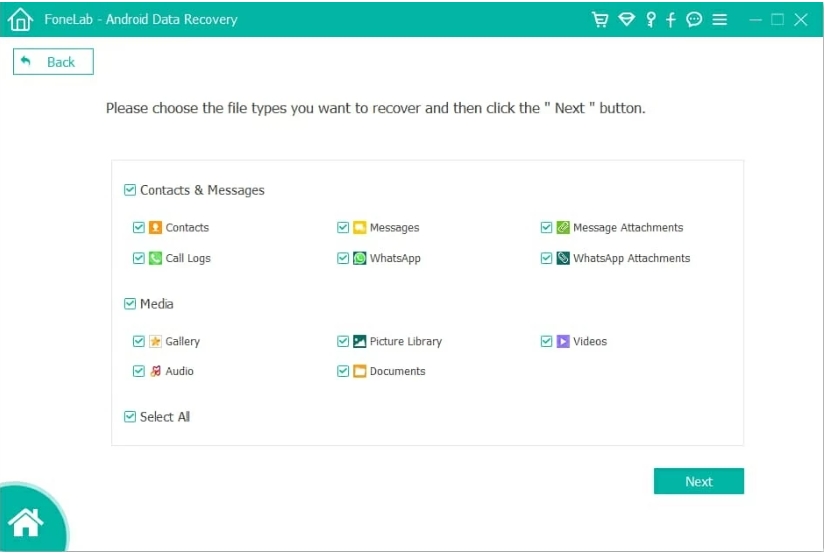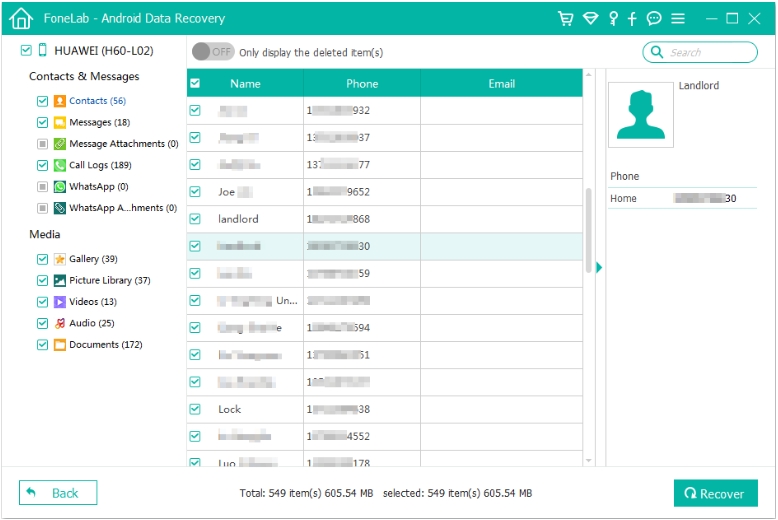Xiaomi Phone Black Screen and How to Recover Data?
Xiaomi black-screen issues don’t always mean data loss. With rebooting, OTG, Fastboot, and iDatApp’s Android Data Recovery tool, you can restore photos, messages, and essential files safely.
Xiaomi Phone Black Screen and How to Recover Data? (Complete Guide 2025)
When a Xiaomi phone suddenly goes black but still vibrates, rings, or shows signs of life, the first reaction for most users is panic—especially when precious photos, WeChat data, or work files are trapped inside. A black screen doesn’t always mean the phone is dead; it often signals a display failure, system crash, corrupt firmware, or hardware malfunction. In many cases, the system and internal storage remain intact, meaning data recovery is still possible.
This article breaks down why Xiaomi phones encounter black-screen issues, what data-rescue options you still have, and how to recover files safely without worsening the damage. Instead of repeating generic instructions, we explore actionable, real-world solutions designed specifically for Xiaomi ecosystems and modern data-recovery scenarios.
Guide List
- Understanding the Xiaomi Black Screen Problem
- Method 1: Extract Data Using iDatapp Android Data Recovery
- Method 2: Force Reboot & System Wake-Up (For Normal System Crash)
- Method 3: Use Fastboot or Recovery Mode to Access Data (For Semi-Functional Devices)
- Method 4: Use OTG + Keyboard/Mouse to Control a Dark Xiaomi Screen
- Method 5: Remove Battery & Reconnect Power (For Hardware-Triggered Black Screen)
- Additional Tips for Maximizing Xiaomi Data Recovery Success
- FAQ Section
Understanding the Xiaomi Black Screen Problem
A Xiaomi black screen often comes in several patterns: no display but audible notifications, screen flickering before going dark, full black screen after system update, or a sudden shutdown without warning. These symptoms usually point to one of the following causes:
- MIUI system crashes or upgrade failures
- AMOLED panel damage from drops
- Motherboard malfunction
- Battery or power-board fault
- OS corruption after improper flashing
- Water damage causing display component failure
The key point is: the phone being black does not mean your data is gone. The storage chip (UFS/EMMC) often remains readable. Your recovery success largely depends on whether the system can still boot internally and whether the touchscreen is responsive.
Before giving up on your Xiaomi data, there are several practical methods—ranging from simple forced restarts to deep extraction tools—to retrieve files safely. Below, we explore 4 actionable methods, each supported with detailed steps and precautions.
Method 1: Extract Data Using iDatapp Android Data Recovery
This is the recommended method when the Xiaomi display is non-functional, but the device internally powers on. iDatApp’s Android Data Recovery solution allows deep extraction from black-screen phones without needing a working display.
iDatapp Android Data Recovery is designed for complex scenarios such as display failure, system freeze, or partially unresponsive Xiaomi devices. Instead of relying on the screen, it interacts with the underlying Android subsystem to scan the internal storage, even if the phone display is completely dead. The software is built to bypass the visual interface, automatically recognize Xiaomi models, and access photos, videos, messages, contacts, WhatsApp attachments, and other internal files. Unlike generic recovery apps, it works without requiring pre-enabled USB debugging in many Xiaomi models, using advanced handshake protocols to initiate recovery.

Steps
1.Download and install iDatapp Android Data Recovery on your computer.

2.Launch the software and choose “Andriod Data Recovery”.
3.Connect the Xiaomi phone via USB.


4.Allow the tool to automatically enter scanning mode.
5.Preview recoverable records: photos, videos, SMS, WhatsApp, app files, etc.

6.Choose files and click Recover to save them to your PC.

Important Notes
- This method works even when touch is unresponsive.
- Best success rate when the phone still vibrates or heats up during charging.
- Works for most Xiaomi models including Mi, Redmi, and POCO series.
Method 2: Force Reboot & System Wake-Up (For Normal System Crash)
If the black screen was triggered by a sudden freeze or MIUI crash, a force reboot can revive the display long enough to back up your data. This method is the least technical and often surprisingly effective. Even if the display seems completely dead, sometimes the OS is simply stuck and needs to reload critical services.
Modern Xiaomi phones rely heavily on software-driven display initialization. A temporary glitch—like a GPU crash, overfilled cache, or MIUI animation bug—can cause the display pipeline to stop responding. The phone appears dead, but internally it's still powered. By forcing a reboot, you reset the power controller, reload screen drivers, and restore touch services. If the issue is not caused by physical panel damage, the display may return temporarily, allowing users to immediately back up photos, videos, WhatsApp/WeChat data, and app files. This method is especially helpful after MIUI updates or overheating incidents.
Steps
- Hold Power + Volume Up for 12–15 seconds.
- Wait until the phone vibrates or shows a faint logo (if visible).
- If the display returns, unlock the device and back up data immediately:
- Go to Settings → Additional settings → Backup & restore
- Or copy files directly to a PC.
- If the screen flickers then goes black again, repeat and enable USB debugging quickly for the next methods.
Important Notes
- If the device heats excessively without booting, do NOT keep forcing restarts.
- If no vibration occurs, the issue may be battery-related or hardware-level.
Method 3: Use Fastboot or Recovery Mode to Access Data (For Semi-Functional Devices)
If the display is black but the phone still enters Fastboot or Recovery mode (sometimes visible with a flashlight at an angle), you can export data indirectly.
Fastboot mode and Recovery mode are low-level partitions in Xiaomi devices that run independently from MIUI. Even when the operating system is corrupted or the display driver can't load, these modes often still function. By connecting the phone to a computer, users can send specific commands to read device information, initiate ADB access (when available), and extract certain data. Although this method has limitations and does not grant full filesystem access without unlocking the bootloader, it's still an effective technique to salvage partial data such as internal folders, logs, or cached images.
Steps
- Hold Volume Down + Power for 10 seconds to enter Fastboot.
- Connect the device to your computer.
- Use fastboot devices to confirm detection.
- If Recovery mode is accessible:
- Choose “Connect to Mi Assistant” (if visible).
- Use Mi Assistant or ADB (if available) to extract accessible files.
- Store the recovered files on your PC.
Important Notes
- Full data extraction via Fastboot requires an unlocked bootloader.
- This works better on older Xiaomi models where ADB is more permissive.
Method 4: Use OTG + Keyboard/Mouse to Control a Dark Xiaomi Screen
When the screen is black but touch is still responsive, you can control the phone blind using an OTG adapter. This trick helps users enable USB debugging or transfer files even when the display panel is dead.
Most Xiaomi phones support OTG input, meaning they can read external keyboards or mice directly. Even without a functioning display, the Android touchscreen grid may still register taps. By connecting an OTG mouse, users can move a cursor and navigate menus, even on a black screen. This allows blind navigation to enable USB debugging or open the File Manager to offload photos and videos to a USB drive. It’s a practical, hardware-based workaround often used by technicians before performing deeper system extractions.
Steps
1.Plug an OTG adapter into your Xiaomi phone.
2.Connect a USB mouse or keyboard.
3.Observe whether the phone vibrates or makes sounds (indicating UI response).
4.Use blind navigation to:
- Unlock the device
- Open settings
- Enable USB debugging
5.Connect the device to a PC and transfer data.
Important Notes
- Works best when you know your lock-screen pattern or PIN location.
- Not effective if the phone is fully unresponsive or touch circuits are damaged.
Method 5: Remove Battery & Reconnect Power (For Hardware-Triggered Black Screen)
This method applies only to older Xiaomi phones with detachable batteries or models where technicians can disconnect the internal battery via service screws.
Occasionally, a hard-locked power controller (PMIC) causes the Xiaomi device to remain off or stuck in a black-screen state. Removing the physical battery cuts all electrical flow, resetting the PMIC and forcing a clean boot. This method is effective when drops or sudden power surges confuse the hardware layer. By reconnecting power, the screen may temporarily return, allowing long enough access to pull important files. It's a hands-on technique often used in repair shops before resorting to deeper diagnostics.
Steps
- Power off the device (if possible).
- If it has a removable battery, remove it for 30 seconds.
- For non-removable models, open the back cover and disconnect the battery Flex cable.
- Reconnect the battery and boot the device.
- Back up data immediately if the display returns.
Important Notes
- If under warranty, do NOT open the device yourself.
- Hardware resets do not fix actual display or motherboard damage.
Additional Tips for Maximizing Xiaomi Data Recovery Success
To increase your chances of retrieving files from a black-screen Xiaomi phone, keep these professional guidelines in mind:
- Stop using the device immediately to prevent data overwriting.
- Avoid random disassembly unless you understand Xiaomi hardware.
- Do not flash new ROMs, as this may erase internal storage.
- Don’t factory reset, which permanently destroys user data.
- Use original charging cables, as unstable power can worsen boot failures.
- If the phone heats excessively, disconnect immediately; overheating indicates motherboard failure.
- Avoid cheap “miracle” apps—many are fake and can damage partitions.
FAQ Section
Can I recover files from a completely dead Xiaomi phone?
If the motherboard is dead, it requires chip-level recovery. If the screen is dead but the system powers on, data recovery is possible.
Will data recovery void my Xiaomi warranty?
Software-based recovery methods (like iDatApp) do not void warranties. Hardware disassembly may void it.
My Xiaomi shows a black screen after updating MIUI. What should I do?
ry a force reboot first. If that fails, use recovery tools like iDatApp to extract data before repairing the system.
Can I retrieve WhatsApp or WeChat chat history?
Yes. Tools like iDatApp support deep extraction of WhatsApp, WeChat, and app-level data even from black-screen devices.
s professional help necessary?
Only if the phone shows signs of motherboard damage or does not power on at all. Otherwise, software extraction is usually sufficient.
Final Summary
Recovering data from a Xiaomi black-screen phone is often possible because internal storage usually remains intact. By using a combination of force rebooting, OTG navigation, Fastboot access, and especially professional tools like iDatApp Android Data Recovery, users can safely retrieve photos, messages, and app data before repairing the device.

